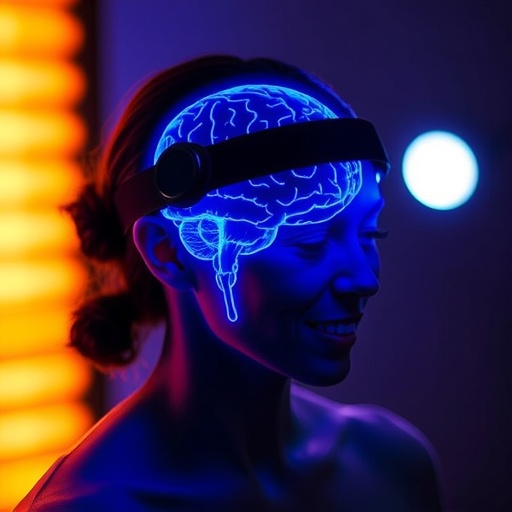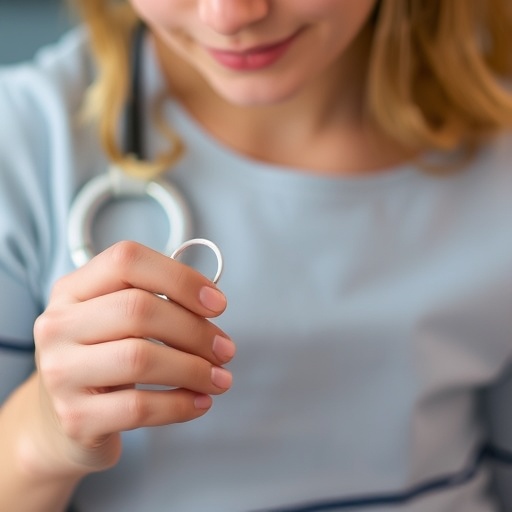In recent years, the application of light-emitting diodes (LEDs) in medical therapies has gained substantial attention, particularly for their potential in treating brain injuries. A pioneering study conducted by Chen et al. illuminates the profound impact of transcranial photobiomodulation (TPBM) on the recovery from traumatic brain injuries (TBIs). Utilizing 1064 nm light-emitting diodes, the researchers have ventured into uncharted territories of neurotherapy, effectively showcasing how specific wavelengths of light can be employed to modulate glial cell activity and neuroinflammation.
Traumatic brain injury remains one of the leading causes of disability and death globally, often resulting in severe multifaceted impairments. The mechanisms underlying brain injury are complex, frequently involving inflammation, cellular damage, and neuronal death. The challenge has been to find effective therapies that can mitigate these effects and promote recovery. As the field of neuroscience continues to evolve, the discovery that photobiomodulation can influence the cellular responses following a TBI presents a significant breakthrough.
In their study, Chen and colleagues conducted a thorough investigation to determine the efficacy of TPBM in promoting recovery. By illuminating regions of the brain with specific wavelengths of light, they aimed to facilitate glial cell polarization, which plays a vital role in the brain’s healing processes. Glial cells are non-neuronal cells that maintain homeostasis, form myelin, and provide support and protection for neurons. Their polarization is crucial for repairing brain tissue after injury.
The researchers meticulously designed their experiments to assess the impact of 1064 nm LEDs on various models of TBI. They administered the light therapy at different intervals following the injury to identify the optimal timing for intervention. This aspect of the study is particularly critical, as the timing of therapeutic interventions can significantly affect outcomes in neurological recovery. The findings suggested that early application of TPBM yielded more substantial benefits in terms of recovery.
Furthermore, the modulation of neuroinflammation was a key focus of the study. In the aftermath of a TBI, inflammatory responses can exacerbate neuronal damage. Chen et al. observed that TPBM not only reduced inflammation but also promoted the release of neuroprotective factors from glial cells. This dual action highlights the potential of photobiomodulation to simultaneously calm the inflammatory storm while enhancing the brain’s innate healing mechanisms.
Evidence gathered from the experimental models presented compelling support for the efficacy of TPBM. The treated groups showed significantly higher rates of functional recovery compared to the control groups that did not receive light therapy. These improvements were assessed using a variety of behavioral tests, which evaluated motor function, cognitive performance, and overall neurological health. The data suggested that TPBM could represent a novel adjunctive therapy in the broader context of TBI management.
Moreover, the implications of this research extend beyond just traumatic brain injuries. The principle underlying TPBM can potentially be applied to various other neurological disorders, including stroke and neurodegenerative diseases. The versatility of light therapy is indeed encouraging, presenting an array of future research opportunities. As this therapeutic modality gains acceptance, studies like that of Chen et al. are pivotal in establishing foundational knowledge and convincing the medical community of its usefulness.
Importantly, while the results of the study are promising, the authors noted the necessity for further clinical trials to determine the long-term effects of TPBM in human subjects. Translating laboratory findings into clinical practice often presents challenges, and carefully designed studies will be needed to validate the therapeutic window and dosage for optimal efficacy in human patients.
Feedback from the neuroscience community has been overwhelmingly positive, with experts recognizing the potential paradigm shift that TPBM could herald in the treatment of brain injuries. The idea that a non-invasive therapeutic approach using light could alter the course of recovery might resonate with patients who are averse to more invasive methods, such as surgeries or in-patient therapies.
As the research community continues to explore the depths of photobiomodulation and its cellular effects, interdisciplinary collaborations between neuroscientists, biomedical engineers, and clinical practitioners will be crucial. This collaborative effort will ensure that emerging technologies are harnessed effectively, translating scientific discoveries into viable treatment options that can improve patient care.
In conclusion, Chen et al.’s study on transcranial photobiomodulation not only opens new avenues for traumatic brain injury recovery but also challenges the traditional approaches to neurological rehabilitation. It charts a path forward, promising not just hope for TBI survivors but potentially revolutionizing how we approach myriad neurological conditions. As we stand on the brink of a new era in neurotherapy, the implications of this research could lead to transformative changes in how we understand and treat brain health.
The landscape of brain injury therapy is beginning to shift, and with studies like this paving the way, we can anticipate a future where advanced methodologies, such as TPBM, become standard components in the clinical toolkit for managing trauma and promoting recovery in the nervous system.
Subject of Research: Transcranial photobiomodulation and traumatic brain injury recovery
Article Title: Transcranial photobiomodulation promotes traumatic brain injury recovery via modulating glial cell polarization and neuroinflammation: a study of 1064 nm light-emitting diodes.
Article References:
Chen, G., Xu, Z., Ma, H. et al. Transcranial photobiomodulation promotes traumatic brain injury recovery via modulating glial cell polarization and neuroinflammation: a study of 1064 nm light-emitting diodes.
J Transl Med 23, 1245 (2025). https://doi.org/10.1186/s12967-025-07170-2
Image Credits: AI Generated
DOI: https://doi.org/10.1186/s12967-025-07170-2
Keywords: photobiomodulation, traumatic brain injury, neuroinflammation, glial cells, light therapy
Tags: cellular responses in brain injuryeffective therapies for brain traumaglial cell activity modulationLED therapy in neurotherapylight therapy for brain injurylight-emitting diodes in medicinemechanisms of brain injury recoveryneuroinflammation treatment methodsneuroscience advancements in therapyphotobiomodulation effects on TBItranscranial photobiomodulation researchtraumatic brain injury recovery





